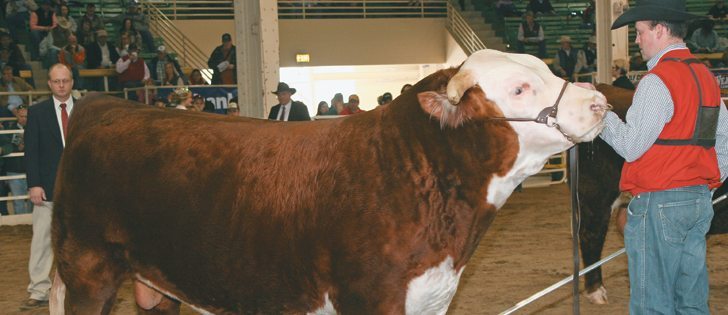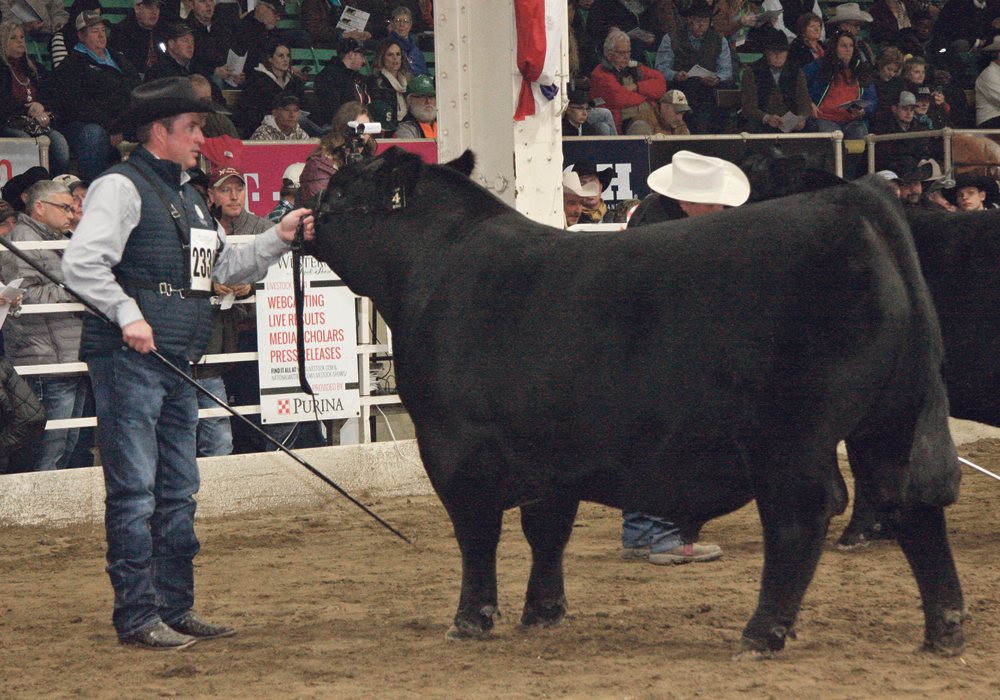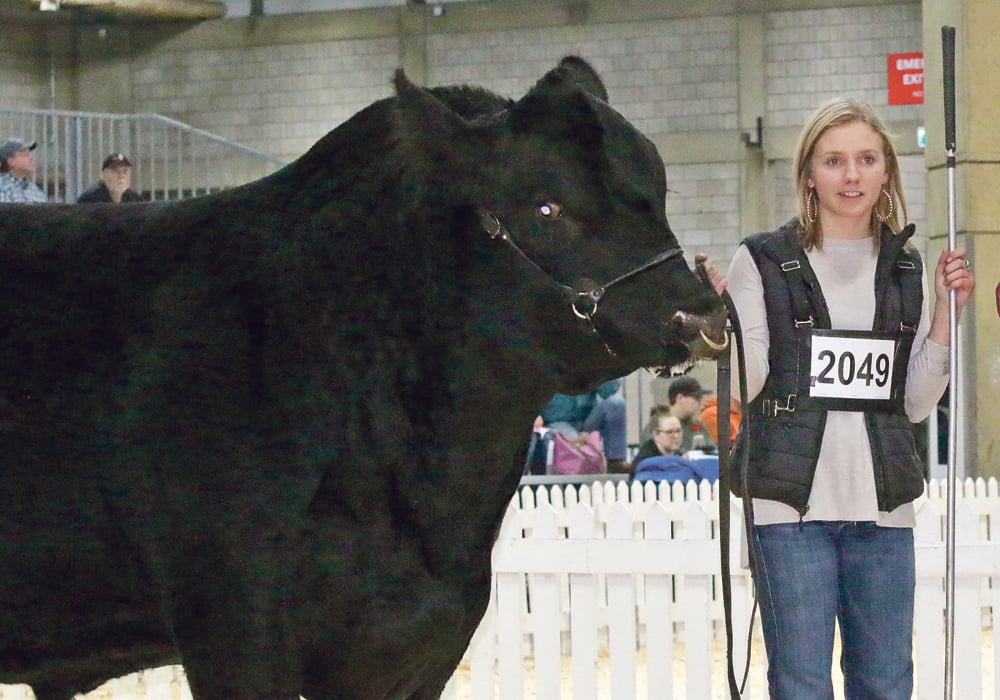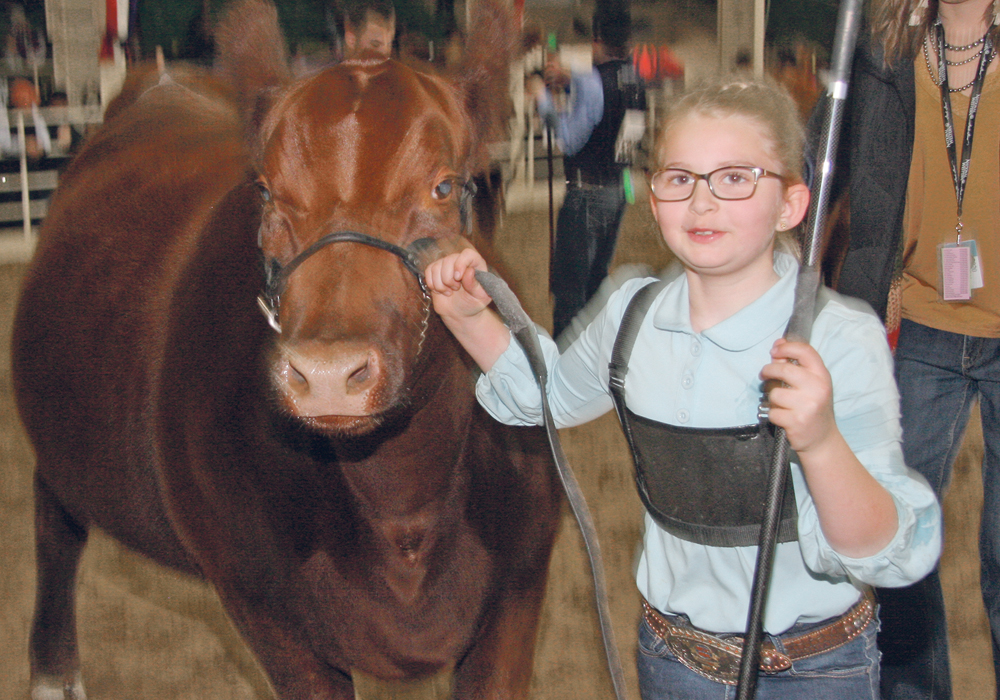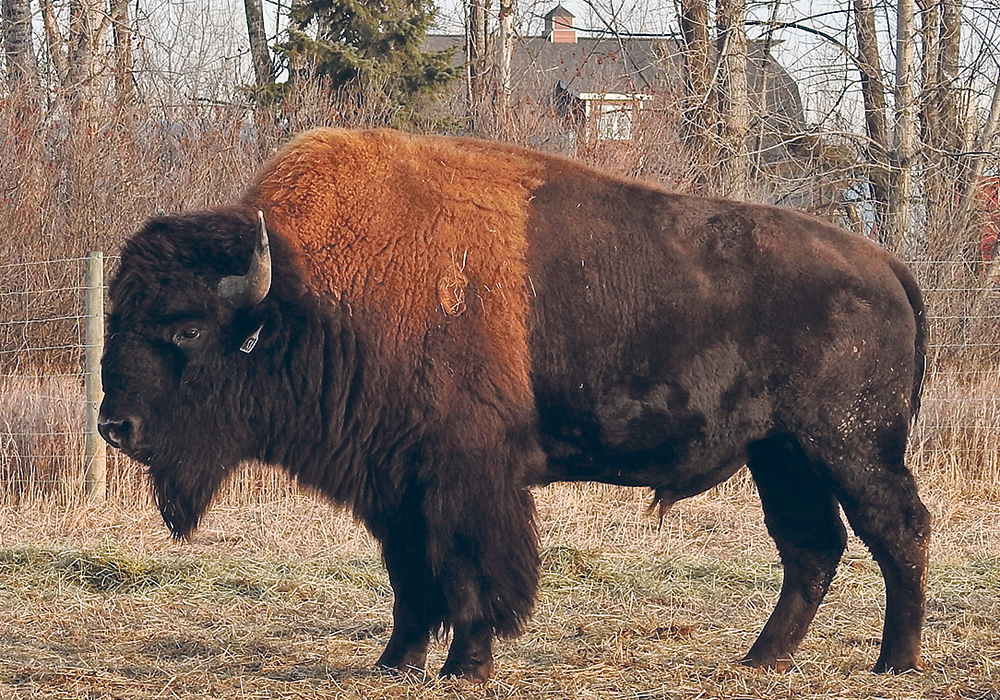Grand champion at Denver show | The genetically superior bull is “a once in a lifetime sort of deal,” says owner
DENVER, Colo. — The Colyer family of Bruneau, Idaho, may have sold a Hereford bull for a world record price of $600,000 last year, but they have remained down to earth.
That bull, C Miles McKee 2103 ET, went on to win grand champion honours at the National Western Stock Show in Denver Jan. 16.
Between grooming cattle and hauling away litter at the stock show, Kyle Colyer took the time to talk about what the family has achieved at its ranch since it got into the purebred business in 1976.
Read Also

Beef check-off collection system aligns across the country
A single and aligned check-off collection system based on where producers live makes the system equal said Chad Ross, Saskatchewan Cattle Association chair.
Kyle works with his parents, Guy and Sherry, and grandparents Ray and Bonnie. His two young children make up four generations on the ranch.
The Colyers have changed their operation from a large commercial ranch where cattle ran on federal lease land to a well respected seed stock operation where ultrasound, performance records, artificial insemination and embryo transfers guide the program.
It was Guy who led the shift.
“I wanted to be able to collect more performance data and have an idea what each individual cow was doing,” he said.
Herefords were an easy choice.
“At that time, they were the most popular breed and we are in a real arid area,” he said.
“Hereford cattle have always been able to withstand a lot of different conditions.”
The Colyers have been showing cattle in Denver since 1983 and have always done well with a long list of grand champions on their ranch resume.
The big payday, however, happened last February when C Miles McKee 2103 ET, named after a Kansas State University professor, sold for $600,000 for a three quarter interest to Sullivan Farms of Dunlap, Iowa, and Curtis and Jackie Castle of Crawford, Oklahoma.
The youngster debuted at Denver last year as part of a pen of bulls and captured attention from the start.
“I never had a bull that had so much interest and so many fans,” Kyle said.
“I knew he was good, but to know that they are elite and good are two different things. There are a lot of good cattle here, but elite ones are rare.”
He figured the 13-month-old would fetch $100,000 to $200,000, but his heart started pounding as he listened in disbelief on sale day as the bids progressed over 10 minutes.
The bull is considered phenotypically superior with a sound pedigree of proven cattle.
“His mother was a no miss kind of cow,” Kyle said.
It probably earned the family about $1.6 million over the last decade, his father added.
The cow, which died last year, was a national champion female in Denver in 2004 and the mother of champions.
“This bull is a once in a lifetime sort of deal. You could spend another lifetime trying to get a bull like him,” Kyle said.
“We are just lucky we had one. Genetics are a funny thing. We’ll have 80 some calves out of him this spring and we will be lucky if we have one that is as good or better than him.”
The bull was grand champion at the Southwestern Exposition in Fort Worth, Texas, last year.
The Colyer ranch, 100 kilometres southwest of Boise, requires special management because it is dry country that receives 200 millimetres of rainfall a year. Summer time temperatures can easily hover around 40 C.
The family relies on irrigation from the Snake River to water crops such as alfalfa and silage corn.
“If it wasn’t for the Snake River, there wouldn’t be a whole lot going on in our area,” Kyle said.
“Because of the river we can irrigate and grow crops. Other than that it would be a desert.”
They have suffered from the super drought that has affected the western U.S. and expect this year to be equally dry.
They keep 300 Hereford and 150 Angus and manage an extensive artificial insemination and embryo transfer program to keep the quality high and consistent.
“We are trying to utilize the best genetics that we can to make the most of consistency, and eliminate the bottom end all the time,” said Kyle, who is taking over more of the breeding decisions as the farm passes from one generation to the next.
“By doing a lot of AI and embryo work, we feel we can eliminate the bottom and get more profitable cattle.”
The culls are sold at the auction market. They also sell show heifers, which has become a large sideline for breeders. Junior breed association members buy the young females.
“It has opened a whole new business for a lot of breeders that really wasn’t in existence 10 years ago,” he said.
The Colyers sold a heifer out of their sale that became national junior champion female in Denver.
“Most all of our heifers that we have sold have had good show careers and were able to produce ones that came back here and won as well,” he said.
Angus were added in 1994, but the family remained loyal to Herefords, even as the breed slipped in popularity.
“Until the last five or six years, Here-ford cattle were kind of struggling for a while,” Kyle said.
“They have really gained back all the popularity they had before or more.”
He said the females have improved with more milk, a more moderate body frame and more muscle added to where it was needed.
The entire family is active in agriculture. Kyle’s sister, Katie, is in-volved with the ranch but also works with LiveAuctions.tv and travels to sales across the country.
Guy was active with the Owyhee County Cattle Association, the Idaho Cattle Association and the National Cattlemen’s Beef Association and was an American Hereford Association board director.
Sherry is involved with the American Hereford Auxiliary. They have both been American Junior Hereford Association national advisers.




